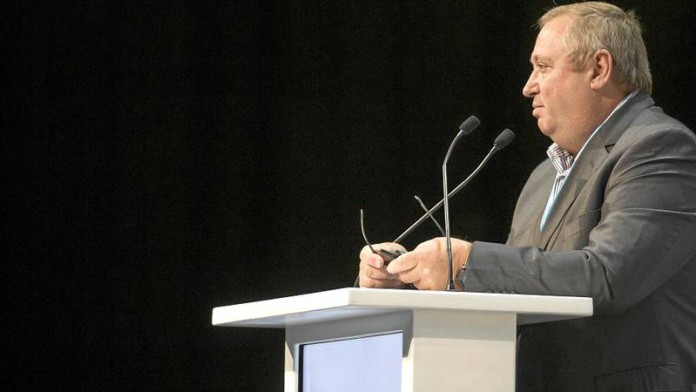
NEAL Froneman, CEO of Sibanye-Stillwater, described himself as “traumatised” by the high fatality rate at the firm’s South African gold mines this year, saying the scale of the tragedy was not something he had experienced in his 40-year mining career.
“In all my 40 years in mining I have never experienced anything like this. I am traumatised by having lost so many members of the Sibanye family,” he said in a conference call in which he also provided a production update for the gold division.
Froneman said it expected to produce 6% less gold from the firm’s South African gold operations of between 1.17 million and 1.21 million ounces in the 2018 financial year. All-in sustaining costs (AISC) have also been revised higher to between R515,000/kg and R530,000/kg, although Froneman said the one fifth depreciation of the rand against the dollar since the first quarter would offset the impact of lower production – caused wholly by fatality-related production interruptions.
Current gold production would be restored and increased in the 2019 financial year following the planned redevelopment of the footwall infrastructure at Masakhane mine which was where seven miners died in May following seismic activity.
Froneman also called for a stop in speculation from ‘influential sources” regarding the cause of the accidents some of which had been “… without facts” and created confusion. “I appeal to all commentators to exercise restraint,” he said. It has been reported that Sibanye-Stillwater was mining remnant pillars that Gold Fields – the previous owner of the company’s gold mines – had decided not to mine for safety reasons.
Froneman said today that the company did mine “white areas”, but these were not remnant pillars that, although containing gold in high grades, are used to support the mine.
Some 21 miners have died in Sibanye-Stillwater’s Driefontein and Kloof mines west of Johannesburg this year – representing half of all fatalities in South Africa’s mining sector. In addition to the death of seven miners following the seismic event, another five occurred when miners departed from mine protocol and entered a ventilation shaft that Froneman said had been locked and “clearly marked with no-entry signs”.
Froneman said there was “photographic evidence” the ventilation shaft had been locked, but he preferred to wait for a full investigation into the accident. He also baulked at the notion that Sibanye-Stillwater was working off a hybrid mining plan at its gold mines. “The DMR [Department of Mineral Resources] reviews our mining plans every month so if there was a hybrid plan then it would never have seen light of day,” said Froneman.
The deaths at Sibanye-Stillwater have attracted a growing wave of condemnation with a member of Parliament’s portfolio committee on mineral resources calling, unusually, for the company to be placed in curatorship.
On June 28, US law firm, Bernstein Liebhard, said it would attempt to “… recover losses” after Sibanye-Stillwater’s share price declined as a result of the fatalities. The suit would deal with “misleading statements” made by the precious metals producer, the publication said. Sibanye-Stillwater said that it noted the announcement “… by various law firms in the US threatening possible class action lawsuits against the company”. It added that if any claims are ultimately filed against it, “… the company intends to vigorously defend itself. We will continue to monitor developments closely”.











